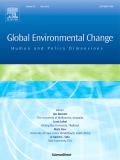The 1992 Framework Convention on Climate Change created the basic international architecture for addressing climate change. That treaty was negotiated at a time when the research literature examining emissions mitigation and the role of energy technology was relatively limited. In the two subsequent decades a great deal has been learned. The problem of stabilizing the concentration of greenhouse gases in the atmosphere has proved far more difficult than envisioned in 1992 and the role of technology appears even more important when emissions mitigation strategies are co-developed in the context of multiple competing ends.
This article appeared in the Energy Economics Supplemental Issue: Green Perspectives.
Africa is well endowed with potential for hydro and solar power, but its other endowments – shortages of capital, skills, and governance capacity – make most of the green options relatively expensive, while its abundance of hydro-carbons makes fossil fuels relatively cheap. Current power shortages make expansion of power capacity a priority. Africa's endowments, and the consequent scarcities and relative prices, are not immutable and can be changed to bring opportunity costs in Africa closer to those in the rest of the world. The international community can support by increasing Africa's supply of the scarce factors of capital, skills, and governance.
This article appeared in the Energy Economics Supplemental Issue: Green Perspectives.
This paper uses a Directional Distance Function (DDF) and the Malmquist–Luenberger Productivity Index to estimate the changing patterns of ‘green’ total factor productivity (GTFP) growth of 38 Chinese industrial sectors during the period 1980–2010. Unlike the measures of traditional total factor productivity (TFP) growth, the DDF incorporates carbon dioxide emissions as an undesirable output directly into the production technology, which credit sectors for simultaneously reducing their emissions and increasing their output. Our estimates of aggregate and sector-level GTFP growth reveal that Chinese industry is not yet on the path towards sustainable, low-carbon growth. A dynamic panel data analysis of the determinants of GTFP across sectors is used to identify factors that might rectify this situation, including state owned enterprise (SOE) reform, the growth of small private enterprises, continued openness to foreign investment and higher spending on R&D, particularly in emission-intensive sectors.

The rhetorical zeal for green enterprise as a global fix for the tripartite challenges of economic recession, environmental degradation and social inequality is increasingly visible in state and non-state pronouncements around the globe under the banner of ‘The Green Economy’. In particular, many policy-facing statements call for transitions leading to a transformation in development practices. Yet there is little detail either in policy or research regarding the types of transitions needed and how they are to be initiated, nor agreement about what a transformed economy might look like. Despite this, there are emergent activities within the cleantech arena which are being heralded as actually existing examples of green economy activities. One means through which these activities are seeking to exert influence over development trajectories is by clustering both at the subnational and transnational level. While diverse in formation, many of these clusters are hybridised, involving actors from public, private and civil society sectors.

This paper, Promoting Eco-Innovation: Challenges and potential solutions for private sector development, begins with an exploration, in Chapter 1, of how eco-innovation is addressed in the current international debate. This refers mainly to the climate change negotiations and the recent Rio+20 conference. Chapter 2 then provides a working definition of eco-innovation and examines how it fits with the requirements of private sector development. Chapter 3 contains an overview of the general conditions under which eco-innovations are generated in developing countries, including both the supply side and the demand side. Chapter 4 discusses possible approaches in the context of German development cooperation, and asks which instruments can be used to foster new innovations and encourage their rapid dissemination.
The report includes case studies on the African continent, Egypt, Ethiopia, Germany, and India.
